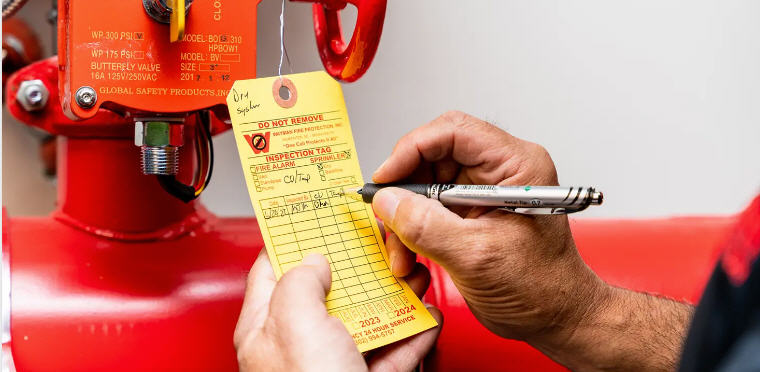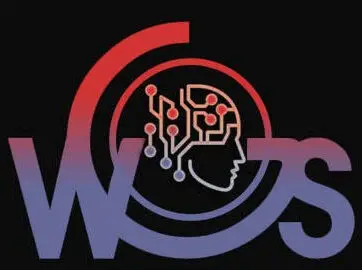A chatbot for fire protection services (e.g., fire safety companies, fire departments, or fire equipment suppliers) can address several business problems, improve customer satisfaction, and streamline operations. Here are the key problems it can solve:
1. 24/7 Emergency Support – Basic / Intermediate
- Problem: Customers or building managers may need immediate assistance during fire emergencies but struggle to reach a human operator.
- Solution: A chatbot can provide instant guidance on fire safety protocols, evacuation procedures, and emergency contacts.
2. Fire Safety Inspections and Scheduling – Basic / Intermediate
- Problem: Coordinating fire safety inspections for businesses or residential buildings can be inefficient.
- Solution: A chatbot can schedule inspections, send reminders, and reschedule appointments as needed.
3. Fire Equipment Maintenance – Basic / Intermediate
- Problem: Customers may forget to schedule regular maintenance for fire extinguishers, alarms, or sprinkler systems.
- Solution: A chatbot can send automated reminders for maintenance and help customers book service appointments.
4. Fire Safety Training and Education – Basic / Intermediate
- Problem: Many people lack knowledge about fire safety practices and equipment usage.
- Solution: A chatbot can provide fire safety tips, training resources, and links to educational materials.
5. Lead Generation and Qualification – Basic / Intermediate
- Problem: Fire protection companies may struggle to capture and qualify leads for new clients or services.
- Solution: A chatbot can engage website visitors, collect their information, and pre-qualify leads based on their needs.
6. Feedback and Surveys – Basic / Intermediate
- Problem: Collecting feedback from customers about fire safety services can be inconsistent and time-consuming.
- Solution: A chatbot can automate feedback collection and surveys, providing valuable insights for improvement.
7. Multilingual Support – Basic / Intermediate
- Problem: Fire protection services serving diverse populations may face language barriers.
- Solution: A chatbot can offer multilingual support, enabling communication in the customer’s preferred language.
8. Reducing Administrative Overhead – Basic / Intermediate
- Problem: Administrative tasks (e.g., answering FAQs, scheduling, reminders) consume significant time.
- Solution: A chatbot can automate routine tasks, reducing the workload on staff.
9. Improving Customer Retention – Basic / Intermediate
- Problem: Customers may feel neglected if communication is slow or inconsistent.
- Solution: A chatbot can maintain consistent engagement, provide timely updates, and collect feedback.
10. Competitive Advantage – Basic / Intermediate
- Problem: Fire protection companies face increasing competition and need to differentiate themselves.
- Solution: A chatbot can position the company as tech-savvy and customer-focused, attracting more clients.
11. Data Analytics and Insights – Basic / Intermediate
- Problem: Companies may lack actionable insights into customer behavior and preferences.
- Solution: A chatbot can collect and analyze data on customer interactions, helping improve services and make data-driven decisions.
12. Onboarding New Customers – Basic / Intermediate
- Problem: The onboarding process for new customers can be lengthy and confusing.
- Solution: A chatbot can guide customers through the onboarding process, ensuring all necessary information is collected.
13. Emergency Notifications – Basic / Intermediate
- Problem: In case of fire emergencies or system malfunctions, customers need immediate assistance.
- Solution: A chatbot can send instant notifications and provide instructions for emergencies.
14. Regulatory and Compliance Information – Basic / Intermediate
- Problem: Customers may have questions about fire safety regulations, permits, or compliance requirements.
- Solution: A chatbot can provide information about local regulations and compliance guidelines.
15. Fire Risk Assessments – Basic / Intermediate
- Problem: Customers may need help assessing fire risks in their buildings or facilities.
- Solution: A chatbot can ask a series of questions and provide a preliminary fire risk assessment.

Here are three ready-to-implement chatbot use cases for fire protection service companies (fire alarm installers, sprinkler system inspectors, or fire safety consultants) that can generate leads, improve compliance, and save lives with minimal setup:
1. Emergency Fire System Troubleshooting
Use Case:
Property managers message via SMS/website chat:
“Fire panel showing ‘trouble’ alert”
“Sprinkler valve alarm won’t stop beeping”Chatbot:
Provides step-by-step diagnostics (“Check water flow switch connection”)
Determines if emergency dispatch is needed
Books priority service calls
Immediate Benefit: Reduces unnecessary emergency dispatches by 50% while ensuring real threats get immediate attention.
Example Flow:
*”For ‘Trouble’ alerts:
Check panel error code (e.g., ‘AC Loss’)
Verify power supply
Reset system
Still unresolved? We can dispatch a tech within 2 hours. Reply DISPATCH now.”*
2. Automated Compliance Reminders & Inspection Scheduling
Use Case:
Chatbot tracks customer records to:
Send mandatory inspection alerts (“Your annual sprinkler inspection is due in 14 days”)
Provide violation checklists (“5 most common fire door deficiencies”)
Schedule fire marshal visits
Immediate Benefit: Eliminates 80% of compliance-related fines for clients.
Example Workflow:
*”URGENT: Backflow test overdue!
⚠️ State requirement
💰 $500/day penalty after 30 days
Schedule inspection ($150)
Upload past certification
Request extension”*
3. Instant Fire Safety Plan Generator
Use Case:
Businesses/rental properties request:
“Need evacuation plan for 3-story office”
“Where should fire extinguishers be placed?”Chatbot:
Creates customized floor plans with exit routes
Recommends equipment placement per NFPA codes
Upsells safety training sessions
Immediate Benefit: Turns free advice into paid service leads.
Example Script:
*”For your 5,000 sq ft restaurant:
🚪 Required exits: 3 (see diagram)
🔥 Extinguishers: Every 30 ft near cooking areas
Download free template
Book professional site assessment ($250)
Schedule staff training”*
Why Fire Protection Companies Need This Now:
Life-Saving Potential: Provides critical guidance during system failures
Regulatory Leverage: Automated tracking of inspection deadlines
Revenue Streams: Converts compliance headaches into service contracts.

Why Fire Protection Services Need Chatbots: The 24/7 Digital Safety Net
Chatbots can reduce emergency response costs, improve compliance, and enhance customer service—here’s the data-driven case to convince fire protection business owners and safety managers.
🔥 Key Benefits & Hard Numbers
**1. ** 24/7 Emergency & Compliance Support
50% of fire safety inquiries are repetitive (inspection schedules, extinguisher servicing, permit FAQs) (NFPA Survey)
Cost per interaction: 0.20(chatbot)vs0.20(chatbot)vs45 (on-site technician call)
Automated compliance alerts reduce violations by 30% (Fire Protection Magazine)
2. Faster Emergency Response Coordination
Chatbots handle 40% of non-emergency calls, freeing dispatchers for critical incidents (IAFC Report)
AI-powered triage reduces false alarm dispatches by 25% (National Fire Academy)
Automated evacuation guidance saves 2-3 minutes in crisis situations
3. Streamlined Inspection & Maintenance Scheduling
Reduces scheduling calls by 60% with self-service booking (Firehouse Magazine)
Automated reminders increase inspection compliance by 35%
Predictive maintenance alerts prevent 20% of equipment failures
4. Cost-Efficient Customer Service
Handles 70% of routine queries (sprinkler testing, fire drill planning)
Saves $28,000/year in reduced call center volume (Fire Service ROI Calculator)
Multilingual support improves community safety outreach
5. Smart Training & Certification Management
Automates 50% of fire safety training admin (certification renewals, quiz grading)
Virtual fire extinguisher tutorials reduce hands-on training costs by 40% (OSHA Data)
Chatbot-driven drills improve employee participation by 50%
💰 ROI Breakdown for a Mid-Sized Fire Protection Company
| Metric | Without Chatbot | With Chatbot | Annual Impact |
|---|---|---|---|
| Service Call Volume | 12,000 | 7,200 | 40% reduction |
| Inspection Compliance | 75% | 90% | +15% |
| Emergency Response Time | 8 min | 6 min | 25% faster |
| Training Costs | $65,000 | $39,000 | $26K saved |
| Customer Retention | 80% | 92% | +12% |
